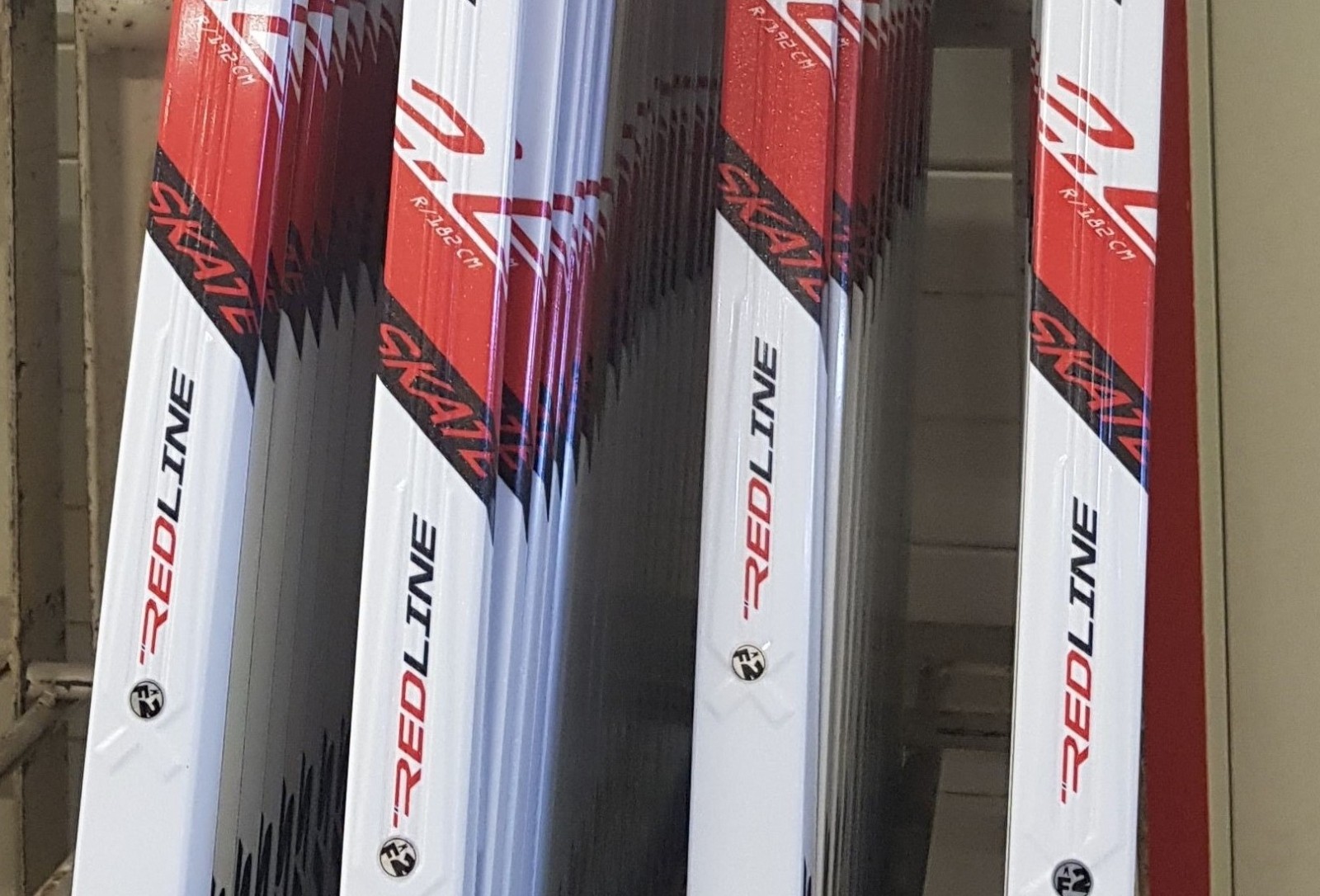
Martin Madshus produced his very first pair of skis in his barn in 1906 beating Abel Rossignol by a year ( the Frenchman began making skis in Voiron “only”in 1907)
Madshus as a company has been continuously operating ever since, thus making it the oldest ski manufacturer in the world.
It likely also is the world’s most modern – at least one of, considering the amount of ( hugely expensive ) robots employed at the production line in Biri, some 30 kilometers from Lillehammer.
https://www.instagram.com/p/BkxUS18Azdp/?taken-by=daily_skier
When you purchase Madshus, you become an owner of much more than a pair of skis.
Norway is one of the most expensive countries in the world for manufacturing – that’s the price the business pays for highly skilled work force and stringent ecological regulations. Therefore, it only makes sense to manufacture high-end products down there. Like Hypersonics, Nanosonics and, of course, best of them – Red Line skis.
https://www.instagram.com/p/BkxBEZbAcAu/?taken-by=daily_skier
Today we offer you the Part 1 of our recent tour of Biri factory ( it is worth repeating that at the DailySkier we do not believe in longreads – those are not for our busy, hectic schedules)
In Part 2 Madshus pros: Bjorn Ivar Austrem, R & D director, Per Wiik who runs both racing and marketing departments – and Nils Hult, Madshus CEO himself, – will answer some of the more common questions both pro-athletes and amateurs have to ski manufacturers
In Part 3 we shall touch upon what Red Line 2.0 , a new iteration of Madshus’best skis, is suppose to be made of, look like – and ski as.
Have a good read!
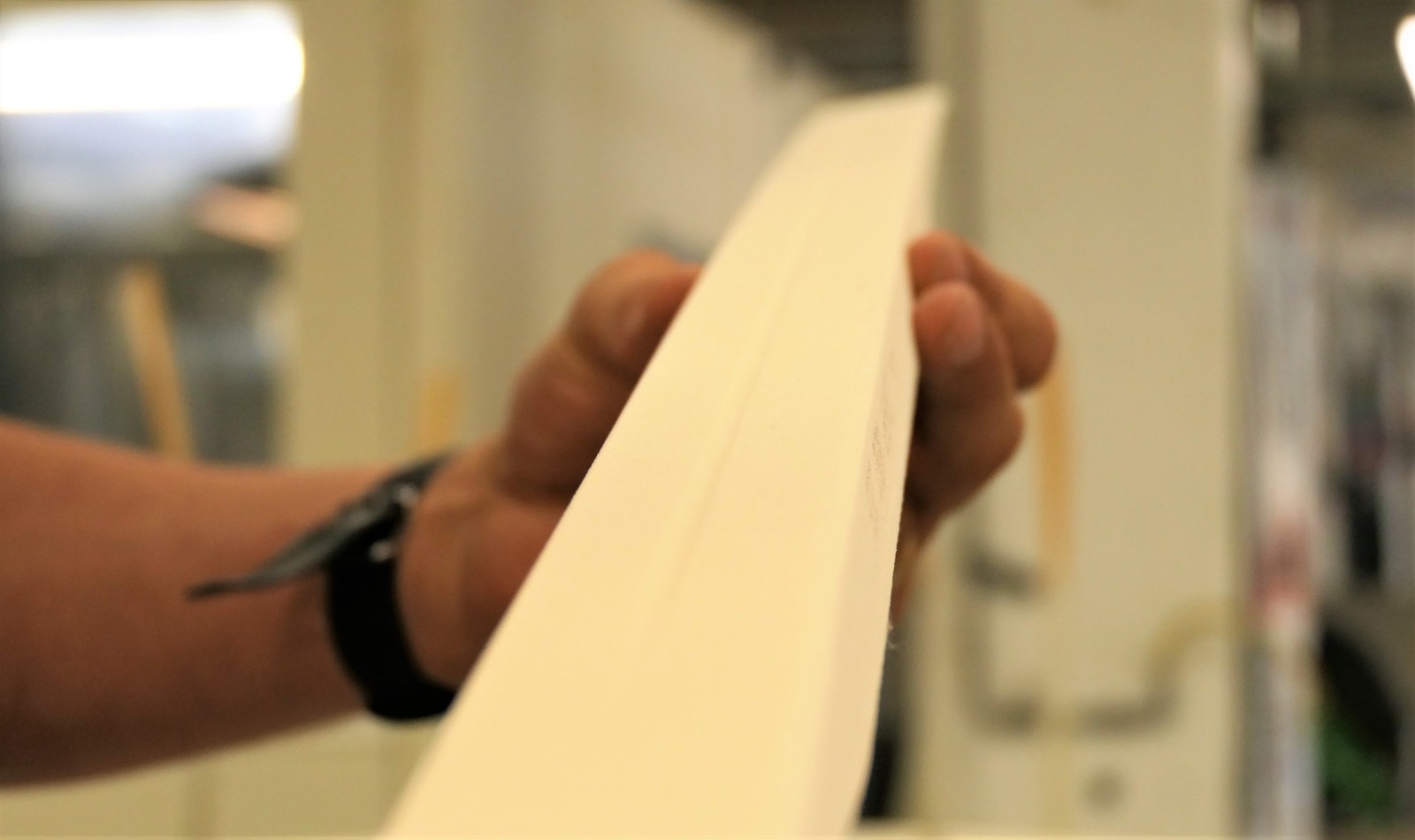
Cores of all Madshus racing skis are made exclusively of Rohacell , low-density stiff foam patented by a German chemical giant Evonik – same material as widely in aerospace and car racing to name but a few applications

Rohacell is not one-fits-all material, it’s a family of foams with different properties – Madshus is using three different levels of flexibility to achieve desired core properties.
Mechanically, there are also tweaks and tricks – some ski models in Biri contain one piece of Rohacell at its core – while the others two or even three. All to achieve desired properties.
There is a little secret that gliding surfaces of practically all modern racing skis are made of PTEX produced by one manufacturer – famed Austrian Isosport. Madshus is not an exception.

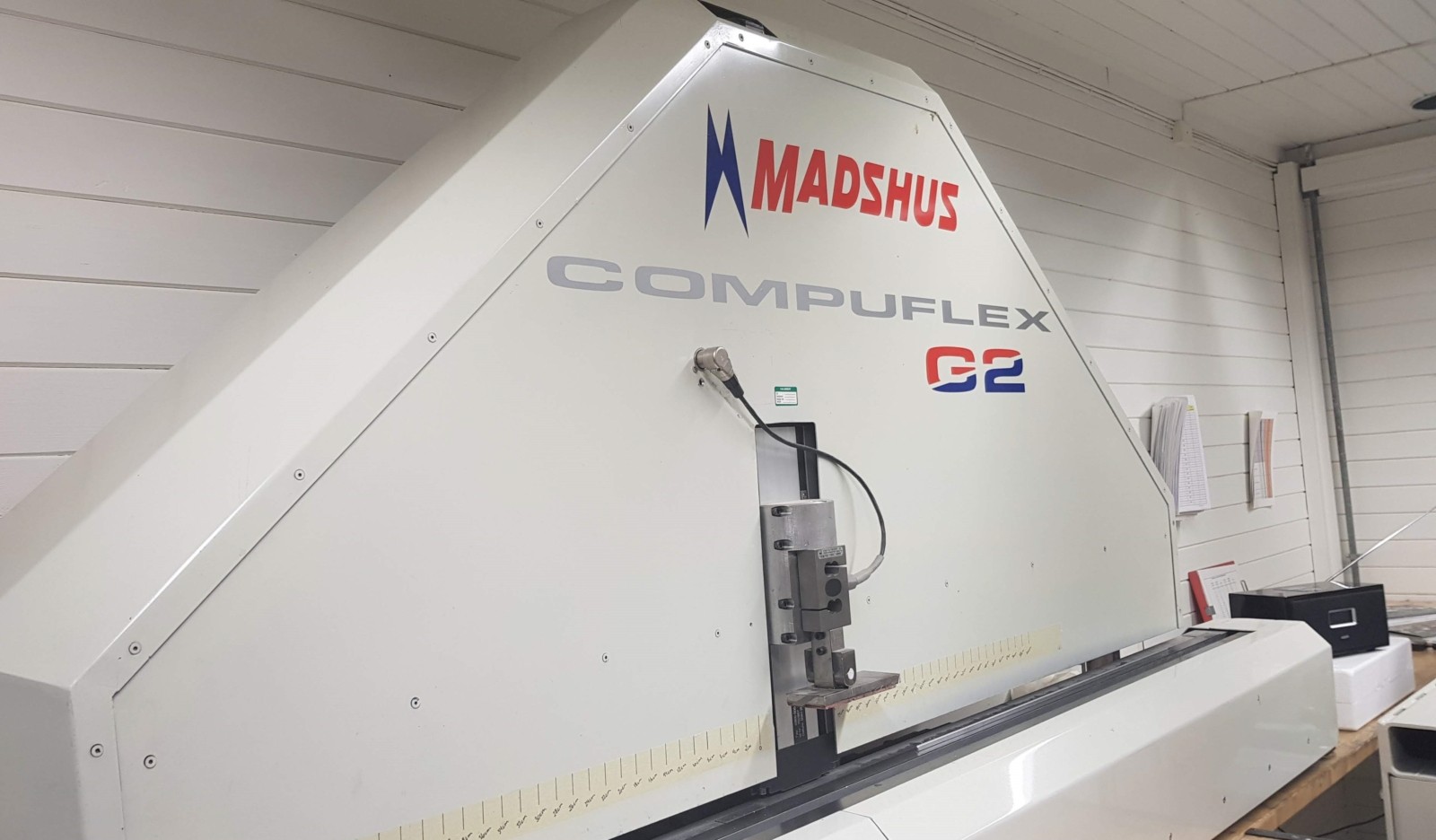
Robots are employed everywhere – doing the most repetitive tasks. The machines costs well over million Euros ( or US dollars) but, essentially, replace humans at the jobs few humans actually want to do day in & day out.
https://www.instagram.com/p/BjxywtGA9Md/?taken-by=daily_skier

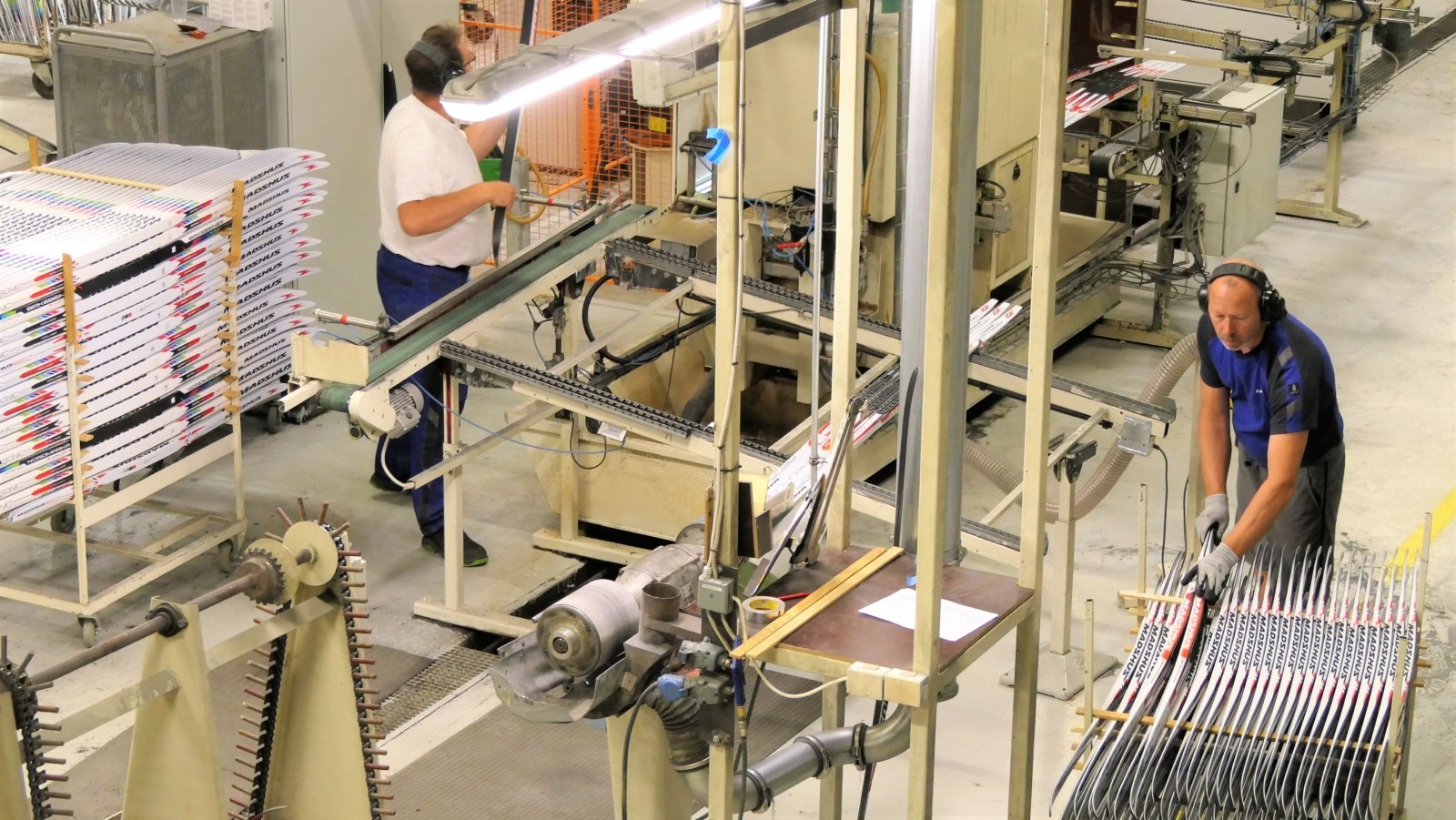

A whopping 70% of all the skis produced are now “skins” – no-wax classic ones, ever more popular in the Nordic countries
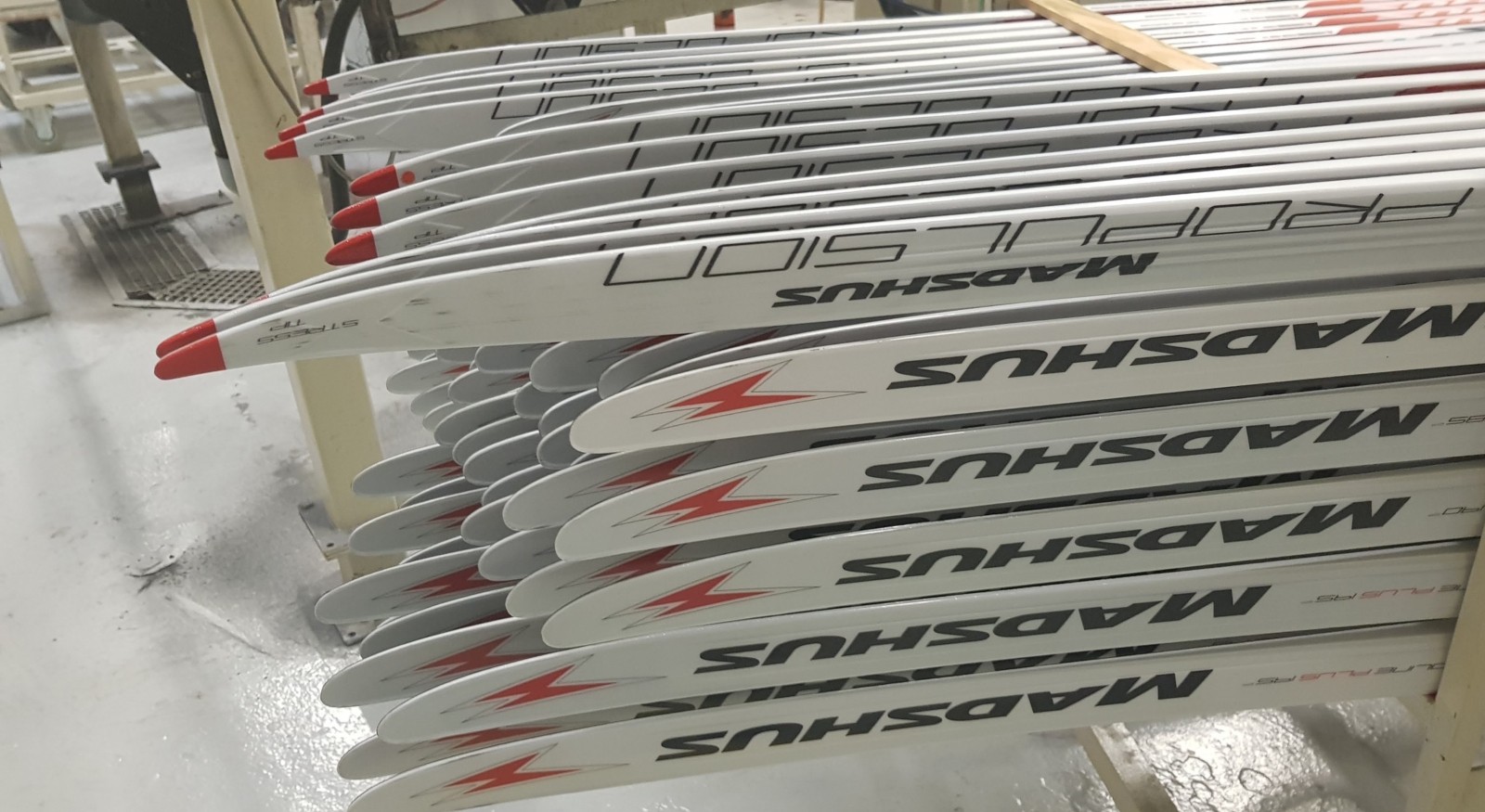
Red Line skis ( including their doublepoling variety, Propulsion), a dream of everyone reading this story, constitute about 25% of yearly production. Red Lines are not just skis – they are a true fashion statement with their suggested retail price (MSRP) being – hold it! – NOK 7500 or some 800 Euros/900 USD at the current exchange rate.
